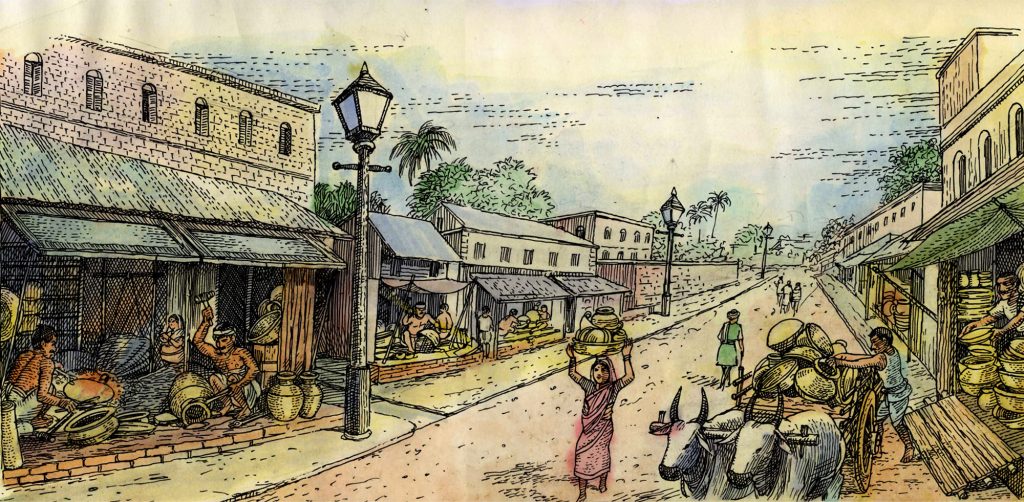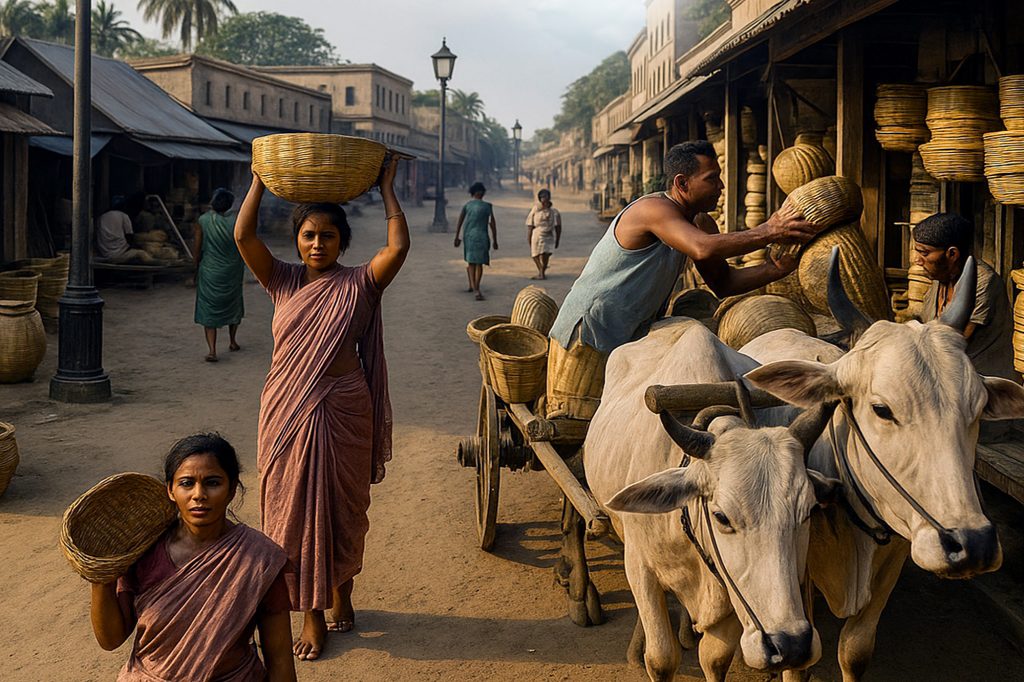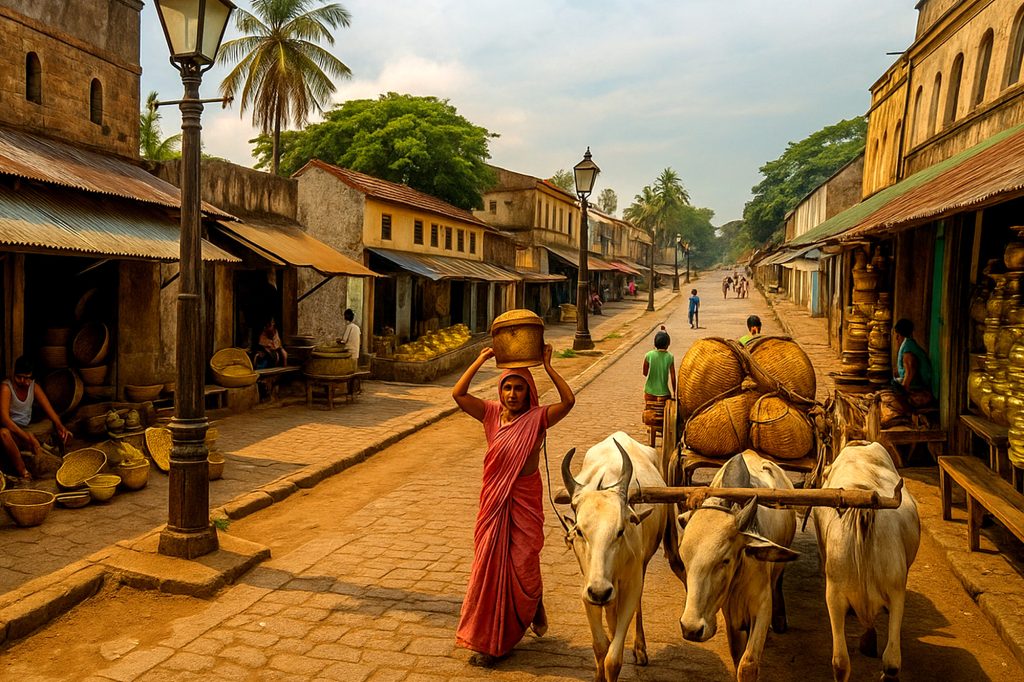Kansaripara Road
Anindita Mazumder
In the days of Charnock when Calcutta was yet to be second city of the Empire, the British encouraged the natives to settle in the area, clearing away the swamps and forests. However, by 1751 this came in the way of town planning as natives constructed structures and dug ponds wherever they pleased, creating an unhygienic atmosphere.
In 1752, the white zemindar, Holwell decreed, following the orders of the company that the natives would not be allowed to construct houses just anywhere but must reside according to their caste-vocation. As a result we had kolus (oil-pressers), kumhors (potters), jele (fishermen) settling according to their hereditary profession, somewhat like the guild system prevalent in England but strictly on caste-basis.
Hence the bell metal artisans, Kansaris or Kanshabaniks came to live in the city, setting up their own paras where the workers lived, manufactured and sold their wares. Many Hindu families ate only on bell metal utensils and hence the Kansaris who held monopoly on both manufacturing and trade came to settle in both northern and southern parts of the city near the large native settlements. Even today, utensils used during Pujas are usually made of brass or bell metal. Bell metal utensils were mostly sold by weight.
Noted researcher, Dr Debashis Basu writing on the localities of Calcutta, found a Kansaripatti on Chitpore Road and all the shops in that area sold only kansa or bell-metal wares. But the biggest settlement of the Kangshabaniks in the north was in and around present Sithnath Road (Ward No. 25) which was earlier known as Kansaripara Lane. Beside Jelepara swang (a pantomime highlighting social aberrations) Kansaripara was also famous for it swang.
In the south, Kansaris occupied extensive areas in Bhawanipore by which the Adi Ganga flowed and at that time the area was considered to be the city’s suburb. In fact, the chronicler of old Calcutta, HEA Cotton, mentioned Bhawanipore as “a populous native place, inhabited chiefly by Hindu artisans in metals who work for the houses in town.”
Kansaris who originally hailed from Hooghly lost their livelihood after their raw material became scarce following the Second World War. With Partition their market in East Bengal and Burma and beyond was cut off while the introduction of enamel and aluminium utensils in poor families and use of glass and porcelain crockery among well-to-do families robbed them of their local market. Initially, they started making badges, buckles and brass buttons, rust proof fittings for ships and even electrical machinery and surgical instruments.
Interestingly, following the loss of their hereditary means of livelihood, the Kansaris instead of looking for jobs turned to entrepreneurship – jewellery making and setting stones. In Bhawanipore, the Kansaris turned into gold and silver-smiths.
With the passage of time the entire locality too lost its previous character and though Kansaris continued to reside there their shops have long disappeared. Today, Kansaripara Road stretching from Elgin Road to Jagubazar is the sole remnant of extensive settlement of Kansaris in this area. According to noted historian PT Nair who lived here for decaded, the names of adjoining roads such Beninandan or Rupnandan Lane are also evidences of the large settlement of Kanshabaniks since Nandan is a prevalent surname among them.
Today, Kansaripara Road is just like any other old residential area with old decrepit structures along with a few new apartments and small establishments without a trace of its old history except in its nomenclature.



